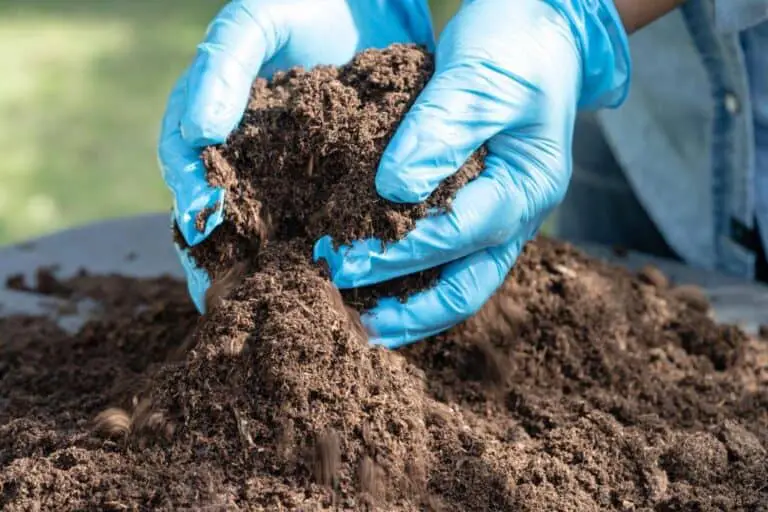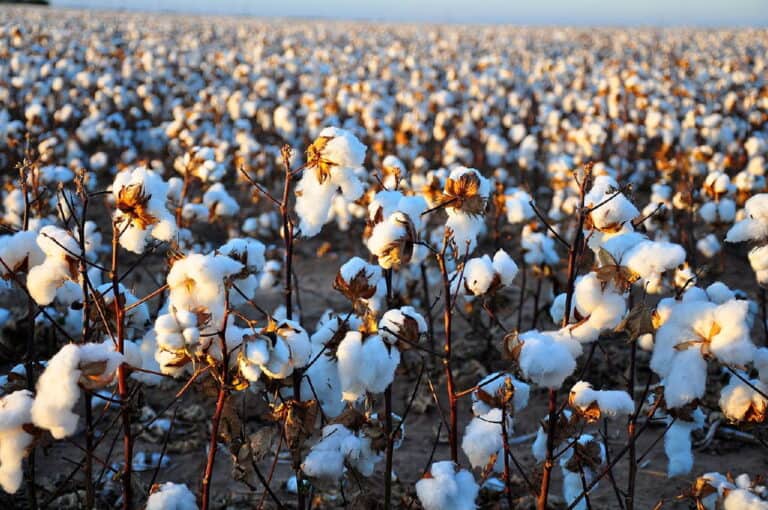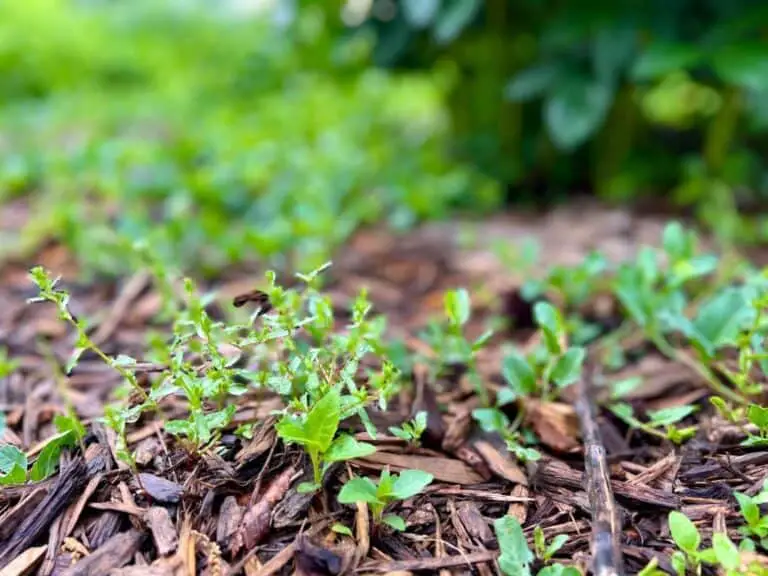Top 10 Plants That Need High Potassium: Every Gardener Should Know

Are you ready to take your gardening game to the next level? Whether you’re a seasoned green thumb or just starting to explore the world of plants, one thing is for sure: potassium is the secret ingredient your plants crave.
Picture this: a flourishing garden bursting with colorful blooms, luscious fruits, and robust foliage that’s the envy of every neighbor. With the right knowledge and a little potassium power, you can turn this dream into a reality. But why is potassium so crucial for plant growth?
Well, think of it as the plant’s personal trainer, boosting its immunity, strengthening its roots, and enhancing its overall vitality. From bananas to roses, we’ll explore a diverse range of potassium-hungry plants and unlock the secrets to their success.
So, grab your gardening gloves and let’s dive into this green adventure together. Get ready to unleash the full potential of your plants as we uncover the top 10 plants that demand high potassium levels. It’s time to transform your garden into a potassium paradise!
Importance of Potassium for Plant Growth
Potassium is an essential element that affects various physiological processes in plants. It plays a critical role in root development, helping plants establish a strong and healthy root system. Additionally, potassium is involved in the regulation of stomatal openings, which affects the plant’s ability to take in carbon dioxide for photosynthesis.
Moreover, potassium is necessary for the synthesis of proteins and enzymes, contributing to proper growth and development. It also aids in the transportation of sugars and carbohydrates within the plant, promoting the production of high-quality fruits. Without sufficient potassium, plants may exhibit a range of symptoms, including yellowing leaves, stunted growth, and reduced fruit production.
Top 10 Plants That Need High Potassium
Now that we understand the importance of potassium for plant growth, let’s explore the top 10 plants that have a high potassium requirement:
1. Tomatoes (Solanum lycopersicum)
Tomatoes are a popular choice among home gardeners, and they happen to be one of the plants that require high potassium. Adequate potassium levels enhance fruit development and improve the plant’s overall health. To ensure your tomatoes thrive, consider adding potassium-rich fertilizers or organic amendments like wood ash or compost.
2. Potatoes (Solanum tuberosum)
Potatoes are another potassium-loving plant. Adequate potassium in the soil promotes tuber formation and helps the plants resist diseases. Ensure your potato plants receive a steady supply of potassium through balanced fertilization or by incorporating potassium-rich organic matter, such as kelp meal or banana peels, into the soil.
3. Peppers (Capsicum spp.)
Peppers, whether they are sweet or spicy, greatly benefit from high potassium levels. Potassium aids in flower and fruit development, leading to larger, healthier peppers. Consider using a balanced fertilizer or incorporating compost into the soil before planting to provide sufficient potassium for your pepper plants.
4. Citrus Trees (Citrus spp.)
Citrus trees, including oranges, lemons, and grapefruits, thrive when given adequate potassium. This essential nutrient improves fruit quality, enhances flavor, and increases the tree’s overall vigor. Apply a potassium-rich fertilizer specifically formulated for citrus trees according to the package instructions to ensure optimal growth.
5. Bananas (Musa spp.)
It should come as no surprise that bananas, being potassium powerhouses, require high potassium levels. Potassium is crucial for banana plants as it promotes healthy root growth, aids in fruit formation, and enhances disease resistance. Incorporate potassium-rich fertilizers or use composted banana peels to supply the necessary potassium.
6. Roses (Rosa spp.)
Roses are renowned for their beauty and fragrance, and they too benefit from a potassium-rich environment. Potassium strengthens rose plants, improves flower production, and enhances their resistance to pests and diseases. Apply a potassium-rich fertilizer specifically designed for roses during the growing season to keep them healthy and blooming.
7. Avocado Trees (Persea americana)
Avocado trees require ample potassium to develop healthy leaves, promote root growth, and produce abundant fruits. Potassium deficiency can lead to poor fruit quality and reduced yields. Apply a balanced fertilizer with a higher potassium content during the growing season to ensure the optimal health and productivity of your avocado trees.
8. Strawberries (Fragaria spp.)
To enjoy plump and delicious strawberries, it’s important to provide them with sufficient potassium. Potassium aids in fruit development, improves flavor, and enhances the plant’s resistance to diseases. Apply a potassium-rich fertilizer before planting and continue to provide supplemental potassium throughout the growing season.
9. Spinach (Spinacia oleracea)
Spinach is a nutrient-packed leafy green that requires high potassium levels for optimal growth. Adequate potassium enhances the plant’s overall vigor, improves leaf development, and helps prevent diseases. Add potassium-rich organic matter, such as compost or aged manure, to the soil before planting spinach.
10. Cucumbers (Cucumis sativus)
Cucumbers, whether they are pickled or sliced, benefit from high potassium levels. Potassium promotes healthy vine growth, improves fruit development, and enhances the plant’s resistance to pests and diseases. Incorporate potassium-rich fertilizers or compost into the soil before planting cucumbers to ensure they receive an adequate supply of potassium throughout the growing season.
It’s important to note that while these plants have high potassium requirements, that doesn’t mean other plants don’t need potassium at all. All plants benefit from a balanced nutrient supply, including potassium, to support their growth and development.
Potassium Deficiency in Plants
Identifying potassium deficiencies in plants is crucial for maintaining their health and productivity. Some common signs and symptoms include yellowing or browning of leaf margins, necrotic spots, and overall poor growth. Plants lacking potassium are more susceptible to diseases and environmental stresses, such as drought and frost.
Several factors can contribute to low potassium levels in soil, including excessive leaching, erosion, or inadequate replenishment through fertilization. Understanding these factors can help gardeners and farmers address potassium deficiencies effectively.
Understanding Potassium Uptake and Absorption in Plants
Potassium uptake by plant roots involves complex mechanisms. It is mainly absorbed as a positively charged ion (K+) through root hairs via active transport processes. The availability of potassium in soil depends on factors such as soil pH, organic matter content, and cation exchange capacity.
Once absorbed, potassium is transported throughout the plant via xylem vessels. It is distributed to various plant tissues, with higher concentrations found in actively growing parts, such as young leaves and developing fruits.
Sources of Potassium for Plants
To ensure adequate potassium levels in the soil, gardeners and farmers can utilize various potassium fertilizers. These fertilizers come in different forms, including potassium chloride, potassium sulfate, and potassium nitrate. Each form has its advantages and disadvantages in terms of solubility, nutrient content, and suitability for specific crops.
Organic sources of potassium, such as compost, manure, and wood ash, also provide a natural and sustainable option for enriching soil potassium levels. However, it is essential to consider the nutrient content, application rates, and potential interactions with other elements when selecting the most suitable potassium fertilizer for your plants.
Potassium Application Methods and Timing
Applying potassium fertilizers effectively involves considering various factors, including the specific crop, soil conditions, and growth stage. Different application methods can be employed, such as broadcasting, banding, or foliar spraying.
The choice of application method depends on factors like the crop’s root system, nutrient mobility, and the desired rate of nutrient delivery. Additionally, timing is crucial to ensuring that plants receive potassium when they need it the most, such as during periods of active growth or fruit development.
Here are some best practices for timing potassium applications based on different growth stages:
- Vegetative stage: Apply potassium before or during the vegetative growth phase to promote root development and overall plant vigor.
- Flowering stage: Boost potassium supply when plants start flowering to support flower formation and reproductive processes.
- Fruit development stage: Increase potassium application during fruit development to enhance fruit quality, flavor, and size.
By following appropriate application methods and timing guidelines, gardeners and farmers can optimize potassium uptake by plants, ensuring their nutrient needs are met at the right stages of growth.
Potassium and Crop Yield
Potassium availability significantly impacts crop yield. Adequate potassium levels contribute to improved crop growth, productivity, and overall quality. Here are some key points regarding potassium and crop yield:
- Crop Requirements: Certain crops have higher potassium requirements than others. For example, crops like tomatoes, potatoes, and citrus fruits have a high demand for potassium to support their growth and development.
- Quality and Market Value: Potassium influences crop quality attributes such as color, flavor, and nutritional value. High-quality produce often commands better market prices, making potassium management crucial for farmers.
Guidelines for Proper Potassium Fertilization
Applying potassium fertilizers correctly is essential to ensure plants receive the required nutrient levels without waste or environmental harm. Consider the following guidelines for proper potassium fertilization:
- Determining Fertilizer Rates: Factors such as soil test results, crop nutrient requirements, and yield goals help determine appropriate potassium fertilizer rates.
- Crop-Specific Adjustments: Different crops have varying potassium requirements at different growth stages. Adjust potassium application rates accordingly to meet specific crop needs.
- Optimizing Use Efficiency: Employ techniques to optimize potassium use efficiency. These include applying potassium fertilizers in split doses, using slow-release fertilizers, and incorporating precision agriculture practices.
- Minimizing Waste: Avoid excessive potassium application to minimize the risk of nutrient runoff and environmental pollution. Follow recommended application rates and timing guidelines based on soil conditions and crop requirements.
Conclusion
In conclusion, potassium is a vital nutrient for plant growth, playing a crucial role in various physiological processes. Understanding the importance of potassium, recognizing signs of deficiency, and providing plants with the right sources and timing of potassium application can significantly enhance their health, productivity, and overall quality.
By addressing potassium deficiencies and meeting the high potassium demands of specific plants, such as tomatoes, potatoes, peppers, and bananas, gardeners and farmers can ensure optimal growth, abundant harvests, and delicious, nutritious produce.
Additionally, incorporating organic sources of potassium and following proper application methods can contribute to sustainable and environmentally friendly plant nutrition practices.
FAQs
Can I use potassium-rich fertilizers on plants that don’t require high potassium?
Yes, potassium-rich fertilizers can be used on plants with lower potassium requirements. However, it’s essential to consider the overall nutrient needs of the specific plant and avoid excessive potassium levels, which may cause imbalances with other nutrients.
How can I determine if my plants lack potassium?
Look for signs such as yellowing or browning leaf edges, stunted growth, or reduced fruit production. Conducting a soil test can also provide insights into nutrient deficiencies, including potassium.
Are there any organic sources of potassium for plants?
Yes, organic sources such as compost, manure, and wood ash can provide potassium to plants. However, it’s important to consider their nutrient content, application rates, and potential effects on soil pH.
Can I over apply potassium to plants?
Yes, overapplication of potassium can lead to imbalances and affect nutrient uptake. It’s important to follow recommended application rates and consider the specific needs of each plant.
How frequently should I apply potassium fertilizer to my plants?
The frequency of potassium application depends on various factors, including soil nutrient levels, plant needs, and the type of fertilizer used. Conduct regular soil tests and follow the recommendations based on the results.
Are there any natural methods to boost potassium levels in soil?
Yes, adding organic matter such as compost or well-rotted manure can help improve soil fertility and increase potassium levels over time.
Can I apply potassium fertilizer during the dormant season?
While potassium application during the dormant season may have limited immediate effects, it can contribute to improving soil potassium levels for future plant growth.





